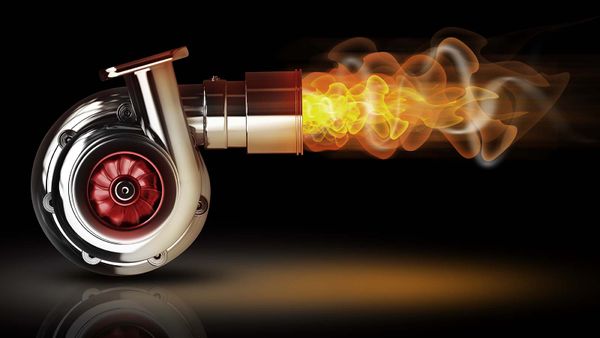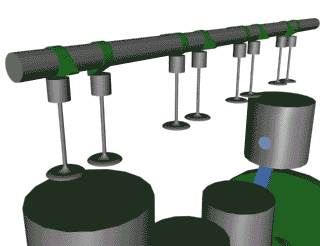Certain circumstances require a car engine to work at maximum power -- for example, a race car needs tons of horsepower to move at high speeds. Similarly, a car that's driven at high altitudes needs an engine that can work hard. In order to create power to move a car, engines need fuel; they also need air with which to burn the fuel. Instead of using bigger cylinders or adding cylinders to your engine, which may not even be feasible, you can get more horsepower by installing a turbocharger in your engine.
A turbocharger compresses the air flowing into the engine. This way, more fuel can be burned, which results in greater power from each explosion within the cylinder. Experts estimate that normal atmospheric pressure at sea level is roughly 14.7 pounds per square inch (psi, which is the equivalent of roughly 1 bar) and that a turbocharger can compress the air by 6 to 8 psi (0.4 to 0.55 bar). This means that a turbocharger can pump roughly twice as much air into the engine. Since the system isn't 100 percent efficient, the engine will probably get a 30 to 40 percent boost in power, rather than a 50 percent boost.
Advertisement
What if you're not driving your car at approximate sea level, but far above? The air is thinner at high altitudes than at low altitudes; therefore the air running into the engine is also less dense than usual, and less effective at burning fuel. This means less horsepower. One solution would be to install a turbocharger. It would pump the thinner air with relative ease, and compress it so as to increase the mass of air available to burn up the fuel. It's even possible to install two turbochargers: a small one to help the car accelerate quickly and a second, larger one to step in at higher speeds and give the car more of a boost.
Advertisement

